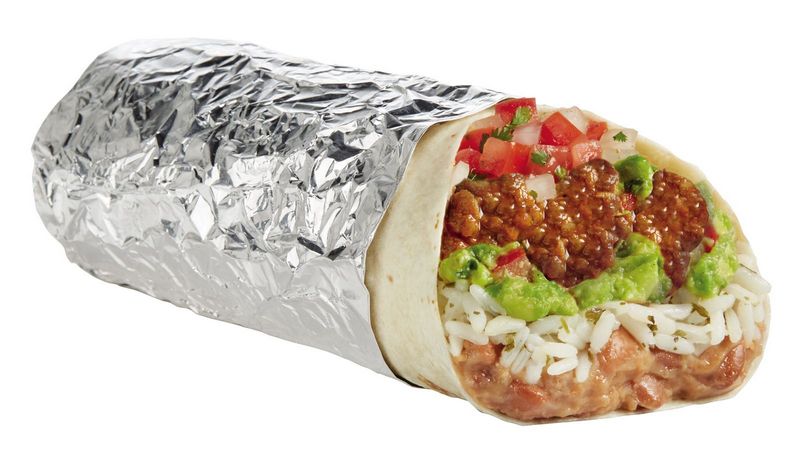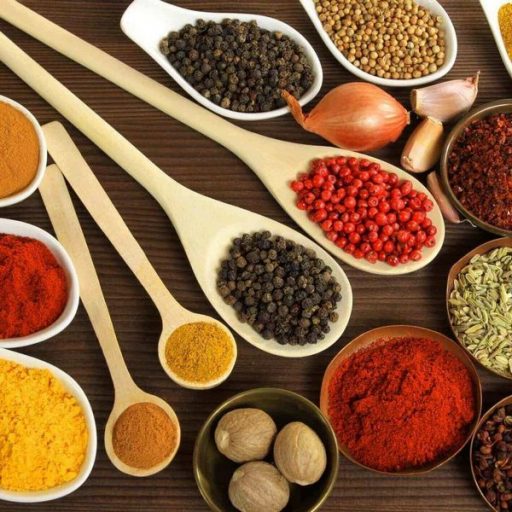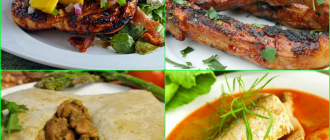
The Magic of Mexican Cuisine: Beyond Tacos and Burritos
When it comes to Mexican cuisine, most people immediately think of tacos and burritos. However, the gastronomic wonders of Mexico go far beyond these popular dishes. From the vibrant flavors of salsa and mexican spices to the comforting goodness of tamales and enchiladas, Mexican cuisine offers a rich tapestry of flavors and textures that is sure to tantalize the taste buds.
At the heart of Mexican food culture is the use of fresh and flavorful ingredients. Pico de gallo, a traditional Mexican salsa made from chopped tomatoes, onions, and cilantro, adds a refreshing burst of flavor to any dish. Meanwhile, the use of spicy chiles and fragrant herbs and spices, such as cumin and oregano, infuses Mexican cuisine with its characteristic heat and depth of flavor.
One cannot talk about Mexican cuisine without mentioning the iconic mole sauce. This complex and labor-intensive sauce is made from a blend of chiles, nuts, seeds, and chocolate, resulting in a rich and velvety sauce that is often served over meat or poultry. Its deep, earthy flavors and hint of sweetness make it a true culinary masterpiece.
Another beloved Mexican dish is chiles rellenos, which are stuffed peppers filled with a variety of ingredients such as cheese, meat, or vegetables. The peppers are then coated in a light batter and fried to perfection. The combination of the smoky heat from the peppers and the gooey cheese or savory filling creates a harmonious explosion of flavors.
No Mexican meal is complete without guacamole, the creamy and tangy avocado dip that has become a staple in many households. Made from ripe avocados, lime juice, onions, and cilantro, guacamole is the perfect accompaniment to tortilla chips or as a topping for tacos and quesadillas.
And let’s not forget about the Mexican beverages. Tequila, the national spirit of Mexico, is known for its distinctive flavor and smoothness. Whether enjoyed straight or in a refreshing cocktail, tequila adds a touch of fiesta to any gathering. Mexican street food also offers a wide variety of refreshing beverages, such as horchata, a sweet rice milk drink, and agua frescas, which are fruit-based beverages that are perfect for quenching your thirst on a hot day.
In conclusion, Mexican cuisine is a treasure trove of culinary delights that goes far beyond tacos and burritos. From the comforting flavors of tamales and enchiladas to the spicy kick of chiles rellenos and the tangy freshness of pico de gallo and guacamole, Mexican cuisine offers something for everyone. So, next time you’re craving a taste of Mexico, don’t limit yourself to just tacos and burritos – explore the magic that lies beyond!
Traditional Mexican Dishes with a Twist
When it comes to traditional Mexican cuisine, there is so much more to explore beyond the popular tacos and burritos. Mexican cuisine is known for its bold flavors and vibrant spices, and there are numerous dishes that showcase the rich culinary heritage of the country.
One of the most iconic Mexican beverages is tequila, which is often enjoyed straight or in cocktails. This distilled spirit is made from the blue agave plant and is a staple in Mexican culture.
Quesadillas are another popular dish that can be found both in Mexico and around the world. These delicious tortillas filled with cheese and other ingredients can be enjoyed as a snack or a main course.
Salsa is a versatile condiment that can be found in almost every Mexican household. Made with a combination of tomatoes, onions, chilies, and Mexican spices, salsa adds a burst of flavor to any dish.
Mexican street food is renowned for its bold and spicy flavors. From tacos to tamales, these dishes are often sold by street vendors and are a beloved part of Mexican food culture.
Chiles rellenos are a classic Mexican dish that consists of stuffed and fried peppers. The filling can vary from cheese to meat, and the dish is typically served with a flavorful sauce.
Comfort food is an integral part of Mexican cuisine, and one popular dish is guacamole. Made with mashed avocados, lime juice, onions, and spices, guacamole is a creamy and delicious dip that pairs well with tortilla chips.
Mole sauce is a complex and flavorful sauce that is often served with meat dishes. Made with a blend of spices, chilies, and chocolate, mole sauce adds a unique and rich flavor to any dish.
Pico de gallo is a fresh and tangy salsa that is made with tomatoes, onions, cilantro, and lime juice. It is often served as a topping for tacos, burritos, and other Mexican dishes.
Corn is a staple ingredient in Mexican cuisine, and it is used in a variety of dishes. From tamales to tortillas, corn is a versatile ingredient that adds a unique flavor and texture to many traditional Mexican dishes.
Regional Flavors and Culinary Traditions
In Mexico, the cuisine is as diverse as the country itself. From tacos to chiles rellenos, tamales to mole sauce, Mexican food is a celebration of rich flavors and vibrant ingredients. Each region has its own unique culinary traditions, adding depth and variety to the country’s food culture.
One of the defining features of Mexican cuisine is the use of spices and chilies. Mexican food is known for its bold and spicy flavors, and chilies are at the heart of many traditional dishes. From the mild and fruity poblano pepper to the fiery habanero, chilies add depth and heat to salsas, moles, and other dishes.
Another staple of Mexican cuisine is corn. Corn is a versatile ingredient that is used in a variety of ways, from tortillas to tamales. It is a key component of many traditional dishes, providing a comforting and familiar base for flavors to shine.
When it comes to Mexican street food, there are endless options to choose from. From tacos to quesadillas, enchiladas to burritos, the streets of Mexico are a food lover’s paradise. These dishes are often made with fresh, locally sourced ingredients and are bursting with flavor.
No meal in Mexico is complete without salsa and guacamole. These condiments are the perfect accompaniment to any dish, adding a burst of freshness and tanginess. Whether it’s a simple pico de gallo or a creamy avocado-based guacamole, these sauces elevate the flavors of any meal.
To wash down these delicious dishes, there are plenty of Mexican beverages to choose from. Tequila, the national drink of Mexico, is a popular choice, whether enjoyed straight or in a refreshing cocktail. Agua frescas, made from fresh fruits and water, are a popular non-alcoholic option, offering a refreshing and sweet treat.
Overall, Mexican cuisine is a celebration of flavors and traditions. From the regional specialties to the street food delights, there is something for everyone to enjoy. So next time you’re craving Mexican food, venture beyond tacos and burritos and explore the rich and diverse world of Mexican cuisine.
The Art of Mexican Street Food
Mexican cuisine is known for its vibrant flavors and diverse range of dishes. While many people are familiar with popular Mexican foods like burritos and guacamole, there is so much more to explore when it comes to the art of Mexican street food.
One of the most iconic street foods in Mexico is the tamale. These delicious parcels of corn dough filled with various ingredients, such as meat, cheese, or vegetables, are wrapped in corn husks and steamed to perfection. Tamales are a staple of Mexican street food culture and are enjoyed by locals and tourists alike.
Another popular street food in Mexico is the quesadilla. These cheesy delights are made by folding a tortilla in half and filling it with cheese, meat, or vegetables. They are then cooked on a griddle until the cheese melts and the tortilla becomes crispy. Quesadillas are often served with salsa and guacamole, adding even more flavor to this comforting street food.
Enchiladas are another must-try street food in Mexico. These rolled tortillas are filled with various ingredients, such as meat, cheese, or beans, and then smothered in a rich mole sauce or salsa. The combination of flavors in enchiladas makes them a favorite among locals and visitors.
No discussion of Mexican street food would be complete without mentioning tacos. These handheld delights are made with soft corn tortillas and filled with a variety of ingredients, such as grilled meat, fish, or vegetables. Tacos are often topped with salsa, guacamole, and pico de gallo, adding a burst of freshness to each bite.
Chiles rellenos are another popular street food in Mexico. These stuffed peppers are filled with cheese, meat, or beans, and then battered and fried to perfection. The combination of the spicy pepper and the savory filling makes chiles rellenos a true delight.
When it comes to Mexican street food, it’s not just about the food itself, but also the experience. Street vendors in Mexico often set up their stalls with colorful displays and lively music, creating a vibrant atmosphere that adds to the enjoyment of the food. And of course, no street food experience in Mexico would be complete without a shot of tequila to wash it all down.
Whether you’re exploring the bustling streets of Mexico City or a small town in the countryside, be sure to indulge in the art of Mexican street food. From the spicy flavors of the chiles rellenos to the comforting taste of tamales, there is something for everyone to enjoy in the rich and diverse world of Mexican street food.
Exploring the World of Mexican Salsas
When it comes to Mexican cuisine, one cannot ignore the vibrant and flavorful world of salsas. Salsas are an integral part of Mexican food culture, adding a burst of flavor to various dishes. From mild to fiery hot, there is a salsa for every taste and preference.
Mexico is known for its love of spicy food, and salsas play a key role in delivering that heat. These condiments are made from a variety of ingredients, including tomatoes, chiles, onions, and garlic. Some salsas are raw and chunky, while others are smooth and cooked.
One popular type of salsa is salsa verde, which is made with tomatillos, a small green fruit native to Mexico. Salsa verde adds a tangy and slightly acidic flavor to dishes like enchiladas and tacos. Another well-known salsa is pico de gallo, a fresh salsa made with tomatoes, onions, cilantro, and lime juice. It is often served with tortilla chips or as a topping for grilled meats.
Mexican salsas are not only used as condiments but also as ingredients in various dishes. For example, mole sauce, a rich and complex sauce made with chocolate and a blend of chiles, is often used to flavor dishes like chiles rellenos and enchiladas. Salsa roja, a cooked red salsa made with tomatoes and chiles, is commonly used in the preparation of tamales.
Exploring the world of Mexican salsas is like embarking on a flavor-filled journey through the diverse regions of Mexico. Each region has its own unique salsa recipes, influenced by local ingredients and culinary traditions. Whether it’s the spicy habanero salsa from the Yucatan Peninsula or the smoky chipotle salsa from Oaxaca, there is always something new and exciting to discover.
So the next time you indulge in Mexican cuisine, don’t forget to explore the world of salsas. Whether you’re enjoying a plate of sizzling fajitas, a cheesy quesadilla, or a refreshing glass of tequila, there’s a salsa waiting to elevate your dining experience.
The Richness of Mexican Seafood
Mexican cuisine is known for its bold flavors and vibrant spices, and when it comes to seafood, it is no different. Mexican seafood dishes are a true reflection of the country’s diverse culinary heritage and its coastal regions.
One of the most popular Mexican seafood dishes is ceviche, a refreshing dish made with raw fish or shrimp marinated in citrus juices. It is often served with tortilla chips and pairs perfectly with Mexican beverages like tequila or a cold beer.
Another must-try Mexican seafood dish is camarones al mojo de ajo, which translates to garlic shrimp. This dish features succulent shrimp cooked in a flavorful garlic sauce and is often served with rice and pico de gallo.
If you’re a fan of spicy food, then the Mexican seafood scene has plenty to offer. Many dishes are spiced up with Mexican spices like chili powder, cumin, and paprika. One popular spicy seafood dish is chiles rellenos de mariscos, which are stuffed peppers filled with a mixture of seafood and cheese.
Mexican cuisine is also known for its comfort food, and seafood is no exception. One comforting dish is seafood mole, which combines the rich flavors of mole sauce with a variety of seafood, such as shrimp, fish, and crab. It is often served with rice and warm tortillas.
When it comes to Mexican street food, seafood plays a prominent role. Tacos de pescado, or fish tacos, are a beloved street food staple. The fish is often lightly battered and fried, then topped with fresh salsa and a squeeze of lime. It’s a perfect combination of flavors and textures.
Seafood is also a key ingredient in many traditional Mexican dishes, such as enchiladas and tamales. Enchiladas de mariscos are filled with a mixture of seafood and smothered in a savory sauce, while tamales de camarones are made with corn masa dough and filled with shrimp.
No exploration of Mexican seafood would be complete without mentioning guacamole. This classic Mexican dip is made with mashed avocado, lime juice, and a variety of other ingredients like tomatoes, onions, and cilantro. It is often served with tortilla chips or as a topping for seafood dishes like grilled fish or shrimp.
Whether you’re a fan of tacos, burritos, or quesadillas, don’t overlook the richness of Mexican seafood. From ceviche to chiles rellenos, there is a wide range of flavors and dishes to explore. So next time you’re craving Mexican cuisine, venture beyond the familiar and discover the delights of Mexican seafood.
Mexican Desserts: A Sweet Ending to Every Meal
When it comes to Mexican cuisine, most people immediately think of savory dishes like tacos, burritos, and enchiladas. However, Mexican desserts are just as delicious and should not be overlooked. These sweet treats are the perfect way to end a meal and satisfy your sweet tooth.

One popular Mexican dessert is the churro. These fried dough pastries are often coated in cinnamon sugar and served with a side of chocolate sauce for dipping. They are crispy on the outside and soft on the inside, making them a delightful treat.
Another classic Mexican dessert is flan. This creamy caramel custard is made with eggs, milk, sugar, and vanilla. It has a smooth texture and a rich, sweet flavor that is truly indulgent. Flan is often served chilled and topped with a drizzle of caramel sauce.
If you’re looking for something refreshing, try a traditional Mexican popsicle, known as paletas. These frozen treats are made with fresh fruit, such as mango, watermelon, or pineapple, and are a popular choice on hot summer days. They come in a variety of flavors and are a delicious way to cool down.
For those who enjoy a bit of heat with their sweet, Mexican desserts like spicy chocolate cake or chili-infused hot chocolate are a must-try. These desserts combine the richness of chocolate with the kick of Mexican spices, creating a unique and bold flavor profile.
Lastly, no discussion of Mexican desserts would be complete without mentioning tres leches cake. This moist sponge cake is soaked in three types of milk – evaporated milk, condensed milk, and heavy cream – giving it a rich and creamy texture. It is often topped with whipped cream and fresh fruit, making it a true indulgence.
Whether you’re a fan of traditional Mexican cuisine or just looking to explore new flavors, Mexican desserts are a delightful way to satisfy your sweet cravings. From churros to flan and everything in between, these sweet treats are the perfect ending to any meal.
The Influence of Indigenous Ingredients
The magic of Mexican cuisine lies in its rich and diverse flavors, which are deeply rooted in indigenous ingredients. From tamales to chiles rellenos, Mexican cuisine showcases the incredible variety of flavors and textures that can be created using these traditional ingredients.
One of the key ingredients in Mexican cuisine is corn. Corn is not only a staple food in Mexico, but it is also an integral part of the country’s food culture. It is used to make tortillas, tamales, and a variety of other dishes. Corn is also used to make Mexican beverages such as atole and pozole, which are popular comfort drinks.
Another important ingredient in Mexican cuisine is chiles. Chiles are used in a variety of ways, from adding heat to dishes like chiles rellenos to creating flavorful salsas and pico de gallo. The use of chiles in Mexican cuisine adds depth and complexity to the flavors of the dishes.
Avocado, or guacamole, is another indigenous ingredient that has become synonymous with Mexican cuisine. Guacamole is made by mashing ripe avocados and mixing them with lime juice, onions, and other ingredients. It is often served with tacos, burritos, and quesadillas, adding a creamy and flavorful element to these dishes.
Mexican spices are also a key component of the country’s cuisine. Spices such as cumin, oregano, and cinnamon are commonly used in Mexican dishes to enhance their flavor. These spices are often used in dishes like enchiladas and mole sauce, which are known for their rich and complex flavors.
The use of indigenous ingredients in Mexican cuisine is what sets it apart and makes it so unique. The combination of flavors, textures, and spices creates a culinary experience that is truly one-of-a-kind. Whether you’re enjoying Mexican street food or dining at a high-end restaurant, you’re sure to be delighted by the magic of these indigenous ingredients.
Mexican Beverages: Beyond Margaritas and Tequila
When it comes to Mexican cuisine, many people immediately think of popular dishes like tacos, enchiladas, and burritos. However, Mexican beverages are just as important and delicious as the food itself. While margaritas and tequila are certainly popular choices, there is a whole world of Mexican beverages waiting to be explored.
One of the most refreshing and iconic Mexican beverages is the agua fresca. This drink is made by blending fruits, water, and a touch of sugar to create a light and fruity beverage. Some popular flavors include watermelon, pineapple, and cucumber. Agua frescas are perfect for quenching your thirst on a hot day or as a complement to spicy food.
For those looking for something with a bit more kick, Mexican hot chocolate is a must-try. Made with rich cocoa powder, milk, and a blend of Mexican spices such as cinnamon and nutmeg, this beverage is the perfect combination of sweet and spicy. It’s often enjoyed alongside traditional Mexican sweets like churros or tamales.
If you’re in the mood for something more traditional, try a glass of horchata. This creamy and sweet beverage is made from rice, almonds, and cinnamon. It’s incredibly refreshing and pairs well with spicy dishes like chiles rellenos or mole sauce.
No discussion of Mexican beverages would be complete without mentioning the beloved Mexican soda. These sodas come in a variety of flavors, including tamarind, guava, and pineapple. They are known for their vibrant colors and unique taste, making them a fun and fizzy addition to any meal.
Lastly, let’s not forget about the iconic Mexican coffee. Known for its bold flavor and smooth finish, Mexican coffee is often enjoyed with a touch of cinnamon or chocolate. It’s the perfect way to start your day or to enjoy after a satisfying meal.
So, the next time you’re exploring the delights of Mexican cuisine, don’t forget to venture beyond the margaritas and tequila. From refreshing agua frescas to creamy horchata, Mexican beverages offer a world of flavors that will delight your taste buds and enhance your culinary experience.
The Vibrant Colors and Presentation of Mexican Cuisine
Mexican cuisine is known for its vibrant colors and beautiful presentation. From the bright green of guacamole to the vibrant red of pico de gallo, every dish is a feast for the eyes. Mexican food is not only delicious, but also visually appealing.
One of the reasons why Mexican cuisine is so visually appealing is because of its use of fresh ingredients. Many Mexican dishes are made with fresh vegetables and fruits, which add a pop of color to the plate. The use of colorful ingredients like tomatoes, peppers, and avocados not only makes the food look more appetizing, but also adds a burst of flavor.
In addition to the colorful ingredients, Mexican cuisine also utilizes a variety of spices and sauces to enhance the flavors and presentation of the dishes. For example, mole sauce is a rich and complex sauce made with a combination of spices, chocolate, and chiles. It is often used as a topping for enchiladas or served with chicken or pork. The deep brown color of mole sauce adds depth and richness to the dish.
Mexican cuisine is also known for its use of salsa, which comes in a variety of flavors and colors. From mild to spicy, salsa adds a burst of flavor to any dish. Whether it’s a tomato-based salsa or a spicy salsa verde, the bright colors of the salsa make the dish look more inviting.
When it comes to Mexican street food, presentation is key. Whether it’s a quesadilla, chiles rellenos, or tamales, Mexican street food is often served in a visually appealing way. The food is usually wrapped in a corn husk or served on a colorful plate, making it not only delicious but also Instagram-worthy.
And let’s not forget about the drinks! Mexican beverages like tequila and margaritas are often served in colorful glasses, garnished with fresh fruit or a salt rim. The vibrant colors of the drinks add to the overall presentation and make them even more enjoyable to drink.
In conclusion, Mexican cuisine is not only about the delicious flavors and comfort food, but also about the vibrant colors and presentation. From the use of fresh ingredients and spices to the visually appealing presentation of dishes, Mexican food is a feast for the eyes as well as the taste buds.
The Role of Spices and Seasonings in Mexican Cooking
In Mexico, spices and seasonings play a crucial role in creating the vibrant and flavorful dishes that make up the country’s rich culinary heritage. From the tangy guacamole to the fiery salsa, every dish is elevated by the careful use of spices and seasonings.
Mexican street food, known for its bold flavors and intense spices, is a perfect example of the importance of seasonings in Mexican cuisine. The popular corn-based snacks like tacos, tamales, and quesadillas are often seasoned with a combination of spices such as cumin, paprika, and chili powder, giving them a unique and irresistible taste.
One of the most famous Mexican spices is chili, which is used in various forms and intensities to add heat and depth of flavor to dishes. From the smoky chipotle chili to the fiery habanero, chilies are a staple in Mexican cooking and are often used in the preparation of sauces, salsas, and marinades.
Mole sauce, a traditional Mexican sauce made from a combination of spices, chocolate, and other ingredients, is another example of the importance of spices in Mexican cuisine. The complex flavors and aromas of mole sauce are achieved through the careful blending of spices such as cinnamon, cloves, and ancho chili.
Spices and seasonings are also used to create the vibrant and refreshing flavors of Mexican beverages. Tequila, the national drink of Mexico, is often enjoyed with a sprinkle of salt and a slice of lime, enhancing its unique flavor profile. Mexican fruit drinks, such as agua frescas, are made with a variety of fruits and spices, creating a refreshing and flavorful beverage.
In conclusion, spices and seasonings are an essential part of Mexican cuisine and play a crucial role in creating the bold and vibrant flavors that define the country’s food culture. From the comfort food of enchiladas and chiles rellenos to the tangy pico de gallo and spicy guacamole, spices and seasonings are the secret ingredients that make Mexican cuisine truly magical.
Mexican Breakfast: Start Your Day with Flavor
When it comes to Mexican cuisine, many people immediately think of tacos and burritos. However, the magic of Mexican flavors extends far beyond these popular dishes. One aspect of Mexican food that often gets overlooked is the incredible variety of breakfast options. Mexican breakfast is a delicious way to start your day with a burst of flavor.
Mexican breakfasts are known for their bold and vibrant flavors, thanks to the use of traditional Mexican spices such as cumin, coriander, and chili powder. These spices add a depth of flavor that elevates even the simplest of dishes. Whether it’s a hearty plate of chiles rellenos or a comforting bowl of tamales, Mexican breakfasts are guaranteed to wake up your taste buds.
One classic Mexican breakfast dish that you must try is enchiladas. These are not your typical enchiladas smothered in cheese and sauce. In Mexico, enchiladas are often filled with a variety of ingredients such as scrambled eggs, beans, or potatoes, and topped with a flavorful mole sauce. This combination of sweet and savory flavors is a true delight.
Another popular Mexican breakfast option is the quesadilla. These are not just your ordinary cheese-filled tortillas. Mexican quesadillas are often stuffed with a variety of fillings such as sautéed vegetables, chorizo, or even huitlacoche, a unique corn fungus. The combination of melted cheese and flavorful fillings makes quesadillas a perfect start to your day.
No Mexican breakfast would be complete without some salsa and guacamole. These iconic Mexican condiments add a burst of freshness and tanginess to any dish. Whether you’re enjoying them with tacos, burritos, or simply spreading them on toast, salsa and guacamole are a must-have for any Mexican breakfast.
Mexican breakfasts are not just about the food, they are also about the culture. In Mexico, breakfast is often enjoyed as a leisurely meal with family and friends. It’s a time to relax, savor delicious food, and start the day off right. And if you’re feeling adventurous, you can even pair your breakfast with a shot of tequila to truly embrace the Mexican spirit.
So, the next time you think of Mexican cuisine, don’t just think of tacos and burritos. Explore the wonders of Mexican breakfast and discover a whole new world of flavors and comfort food.
Vegetarian and Vegan Options in Mexican Cuisine
When people think of Mexican cuisine, they often associate it with meat-heavy dishes like tacos and burritos. However, Mexican cuisine offers a wide range of vegetarian and vegan options that are just as delicious and flavorful.
One popular vegetarian option in Mexican cuisine is the quesadilla. Made with a tortilla filled with cheese and various vegetables, it can be customized to suit any taste. Vegetables such as mushrooms, spinach, and zucchini are commonly used to add flavor and texture to the quesadilla.
Pico de gallo, a fresh salsa made with diced tomatoes, onions, cilantro, and lime juice, is another vegetarian option that can be enjoyed as a dip or as a topping for tacos and other Mexican dishes. It adds a burst of freshness and tanginess to any meal.
For those looking for a heartier vegetarian dish, chiles rellenos are a great choice. They are made by stuffing whole roasted peppers with cheese and then battering and frying them. Served with salsa and rice, they are a satisfying and flavorful option.
Mexican cuisine also offers a variety of vegan options. Salsa, made with tomatoes, onions, cilantro, and various spices, is a staple in Mexican cuisine and can be enjoyed by vegans as a dip or topping. Guacamole, made with mashed avocado, lime juice, onions, tomatoes, and spices, is another vegan favorite.
Other vegan options include enchiladas, which can be filled with a variety of vegetables and topped with a vegan-friendly sauce, and tamales, which are made with masa dough and filled with vegetables or beans. These dishes are often flavored with traditional Mexican spices such as cumin, chili powder, and oregano.
In addition to the delicious food options, Mexican cuisine also offers a variety of vegan beverages. Agua frescas, which are refreshing fruit-infused waters, are a popular choice. Some traditional flavors include horchata (made with rice and cinnamon), tamarind, and Jamaica (made with hibiscus flowers).
Overall, Mexican cuisine is not just about tacos and burritos. It offers a wide range of vegetarian and vegan options that showcase the vibrant flavors and ingredients of Mexico. Whether you’re a vegetarian or a vegan, you can enjoy the spicy and comforting flavors of Mexican street food while exploring the rich food culture of Mexico.
Exploring Mexican Cheeses and Dairy Products
When it comes to Mexican cuisine, people often think of tacos, burritos, and enchiladas. However, there is so much more to discover beyond these popular dishes. One aspect that should not be overlooked is the wide variety of Mexican cheeses and dairy products that add a unique and delicious touch to traditional Mexican dishes.
One of the most well-known Mexican cheeses is queso fresco, which translates to “fresh cheese.” This crumbly and mild cheese is commonly used in dishes such as tamales, quesadillas, and enchiladas. Its soft texture and delicate flavor make it a versatile ingredient that complements the flavors of other ingredients.
Another popular Mexican cheese is queso Oaxaca, also known as Oaxacan cheese. This stringy and elastic cheese is similar to mozzarella and is often used in dishes like chiles rellenos and quesadillas. Its stretchy texture makes it perfect for melting, creating a gooey and delicious filling.
For those who enjoy spicy food, queso de bola is a great choice. This aged cheese has a firm texture and a strong flavor. It is often grated and used as a topping for dishes like tacos and burritos. Its bold taste adds an extra kick to any dish.
When it comes to dairy products in Mexican cuisine, milk and cream play an important role. These ingredients are used to make sauces like mole, a rich and flavorful sauce made with chocolate and various Mexican spices. Milk and cream are also used in desserts such as flan, a creamy caramel custard.
In addition to cheeses and dairy products, Mexican cuisine offers a variety of refreshing beverages. Agua de horchata, made from rice, cinnamon, and sugar, is a popular choice to accompany spicy dishes. Another traditional Mexican beverage is tequila, a distilled alcoholic drink made from the blue agave plant. It is often enjoyed straight or used as a base for cocktails.
Exploring Mexican cheeses and dairy products is a journey into the heart of Mexican food culture. These ingredients add depth and flavor to traditional dishes, making them even more delicious. Whether you’re a fan of spicy food or prefer milder flavors, Mexican cuisine has something to offer for everyone. So, next time you indulge in Mexican street food or enjoy a comforting plate of enchiladas, remember to savor the magic of Mexican cheeses and dairy products.
The Importance of Corn in Mexican Cuisine
Corn, known as “maize” in Mexico, is a staple ingredi






